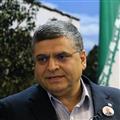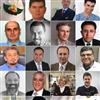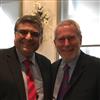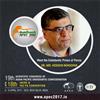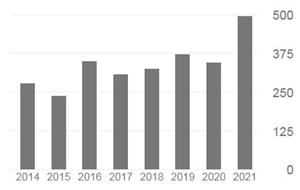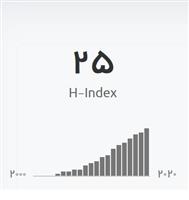Isolation and Differentiation of Adipose-Derived Stem Cells into Odontoblast-Like Cells: A Preliminary In Vitro Study
Abstract
Objective: The aim of present study was to isolate and differentiate human adipose-derived stem cells (ASCs) into odontoblast-like cells.
Materials and methods: In this experimental study, human adipose tissues were taken from the buccal fat pad of three individuals (mean age: 24.6 ± 2.1 years). The tissues were transferred to a laboratory in a sterile culture medium, divided into small pieces and digested by collagenase I (2 mg/mL, 60-90 minutes). ASCs were isolated by passing the cell suspension through cell strainers (70 and 40 μm), followed by incubation at 37ºC and 5% CO2 in Dulbecco's modified eagle medium (DMEM) supplemented with fetal bovine serum (FBS 5%) and penicillin/streptomycin (P/S). After three passages, the ASCs were harvested. Subsequently, flow cytometry and reverse transcriptase polymerase chain reaction (RT-PCR) were used to detect expression levels of NANOG and OCT4 to evaluate stemness. Then, a differentiation medium that included high-glucose DMEM supplemented with 10% FBS, dexamethasone (10 nM), sodium β-glycerophosphate (5 mM) and ascorbic acid (100 μM) was added. The cells were cultivated for four weeks, and the odontogenic medium was changed every two days. Cell differentiation was evaluated with Alizarin red staining and expressions of collagen I (COL1A1), dentin sialophosphoprotein (DSPP) and dentin matrix protein-1 (DMP1).
Results: The ASCs were effectively and easily isolated. They were negative for CD45 and positive for the CD105 and CD73 markers. The ASCs expressed OCT4 and NANOG. Differentiated cells highly expressed DSPP, COL1A1 and DMP1. Alizarin red staining revealed a positive reaction for calcium deposition.
Conclusion: ASCs were isolated successfully in high numbers from the buccal fat pad of human volunteers and were differentiated into odontoblast-like cells. These ASCs could be considered a new source of cells for use in regenerative endodontic treatments.
Keywords: Mesenchymal Stem Cell, Odontoblast, Regenerative Endodontics
